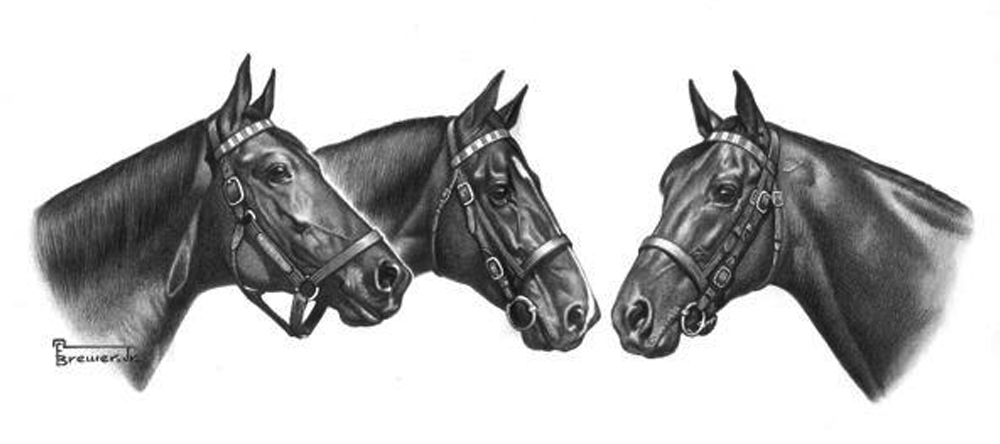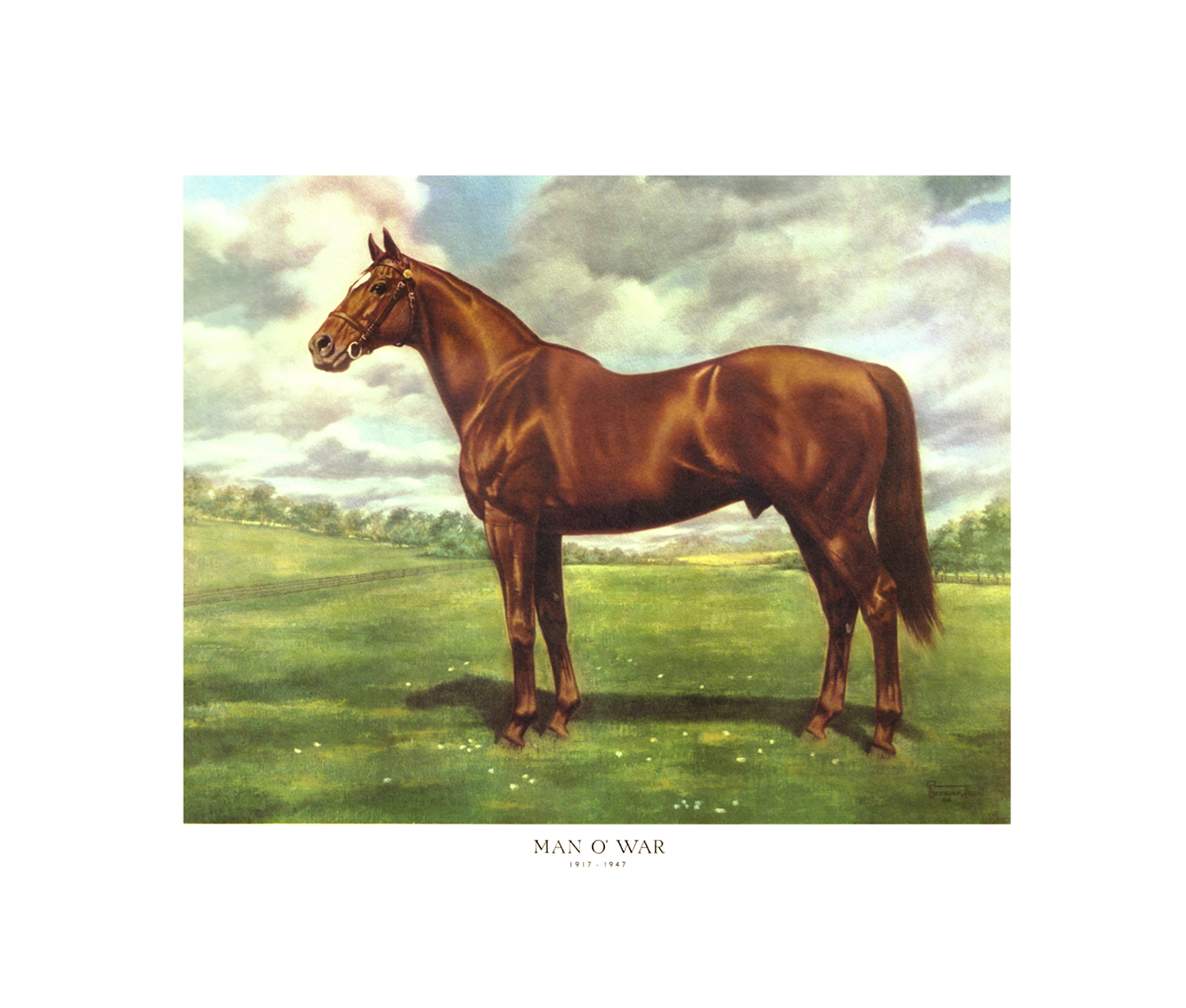This print has been in storage since 1967 and has slight discolorations around the print border which does not distract from the beauty of the print and would be easily covered up when matted and framed.
Man o’ War (March 29, 1917 – November 1, 1947) was an American Thoroughbred who is widely considered one of the greatest racehorses of all time. During his career just after World War I, he won 20 of 21 races and $249,465 in purses. He was the unofficial 1920 American Horse of the Year and was honored with Babe Ruth as the outstanding athlete of the year by the New York Times. He was inducted into the National Museum of Racing and Hall of Fame in 1957. On March 29, 2017, the museum opened a special exhibit in his honor, “Man o’ War at 100”.
In 1919, Man o’ War won 9 of 10 starts including the Hopeful Stakes and Belmont Futurity, then the most important races for two-year-old horses in the United States. His only loss came at Saratoga Race Course, later nicknamed the Graveyard of Champions, where he had a poor start and was beaten by a colt fittingly named Upset.
Man o’ War was not entered in the 1920 Kentucky Derby because his owner, Samuel Riddle, did not believe in racing at the distance of 10 furlongs so early in a young horse’s career. Instead, Man o’ War made his three-year-old debut in the Preakness Stakes where he defeated Upset by 1 1⁄2 lengths. Man o’ War later won the Belmont Stakes by 20 lengths while setting a world record. Throughout the summer and fall, he continued to dominate his fellow three-year-olds, setting multiple records while conceding large amounts of weight to his rivals. His final race of the year was a match race against Sir Barton, who had won what would later be known as the American Triple Crown in 1919. Man o’ War won by seven lengths in the first race to be filmed in its entirety.
Riddle originally intended to race Man o’ War in 1921 but decided against it because Man o’ War would have been assigned record weights in the handicap format used in races for older horses. Instead, Man o’ War was retired to stud, where he became a leading sire whose multiple champions included Triple Crown winner War Admiral. Through his sons and daughters, Man o’ War is found in almost all modern American pedigrees.

